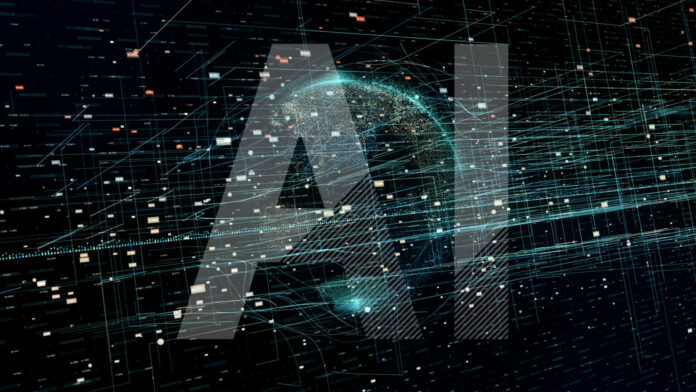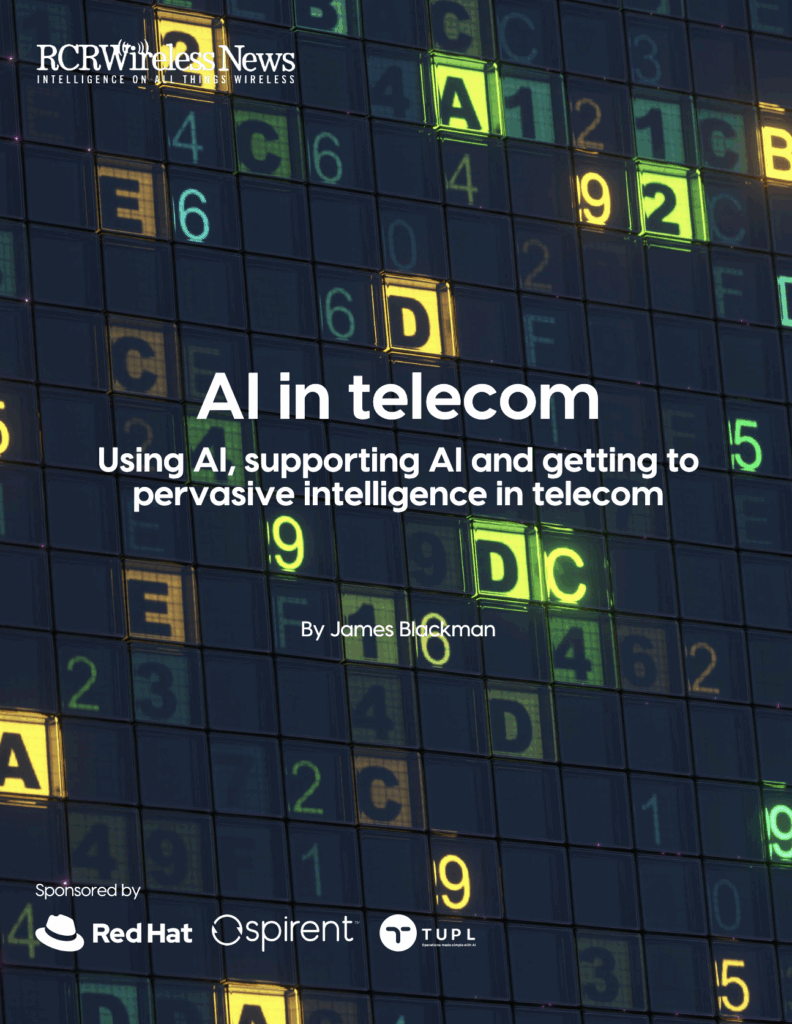AI is transforming telecom operations – from slashing customer resolution times to orchestrating real-time energy savings, reshaping both service delivery and network management.
In sum – what to know:
Auto systems – ML efficiency tools are evolving into semi-autonomous systems to resolve service issues and automate network tasks.
Ticket resolutions – T-Mobile US has almost eliminated ‘tickets’ in call centres, even amid workforce reductions – courtesy of TUPL.
Modular blueprints – low-code platforms enable telcos to scale AI models to new use cases, notably RAN energy optimisation.
Note: This article is continued from a previous entry, available here, and is taken from a longer editorial report, which is free to download – and available here, or by clicking on the image at the bottom. An attendant webinar on the same topic is available to watch on-demand here.
But the vision is to go from ML to AI (see previous entry). “The next step is for customers to use AI to automatically change everything on the network – when they want,” says Steve Szabo at Verizon Business. This goes some way deeper, and we will come back to it; first, there is a task for AI, in some format, to take friction out of front-line customer engagements, whether to untangle service issues or to coordinate service propositions.
Telco-AI solution provider TUPL has been taking friction out of rival T-Mobile’s front-office systems since 2017, it says. “The target was always use-case driven projects,” comments Petri Hautakangas, chief executive at the firm. “Because operators don’t buy platforms for the sake of it; they want tangible results.” Which is what TUPL has delivered, it seems; T-Mobile has seen ‘ticket’ resolutions reduce from hours, at least – days, often – to just minutes.
“Which means ticket-avoidance in 95 percent of inquiries,” says Hautakangas. “So where the agent used to create a ticket, and apologize to the dear customer while the engineer investigated, they can now provide a comprehensive explanation during the call, with a 95 percent success rate – which means your engineering folks are more efficient, and your customer care function looks amazing, and your NPS increases.”
He explains: “T-Mobile wanted to be the best for customer experience; it recognised that 24-48 hours to get back to a customer is just too long. But it is still the standard for this stuff – because it takes time to analyze the issue, customer by customer – and it’s not like there are thousands of engineers waiting for tickets with nothing else to do. So it takes several hours, most likely more than a day, to come back to the customer in the old fashioned way.”
TUPL has never looked back, he says. Its initial customer support solution, called AI Care (“really technical AI care; we don’t touch airtime plans and handsets”), is drawing more data feeds, and delivering more profound results – to the point of ticket avoidance, where solutions are provided to customers while they are still on the call. “It started with six data feeds; now we have over 40 – because engineers and managers bring new feeds to enhance the model.”
He adds: “And most of the time it makes sense; most of the time, we say, ‘let’s do it’. Because it gives more granularity, and caters to new root causes and decisions’. When we started, it was about helping engineers to get resolutions in an hour, and now we can provide a resolution in about 30 seconds. That’s the point. These things get better every month, every quarter, every year – so ever-more things are automated.”
Under the hood, it is a low-code/no-code system, he explains, easy to programme with new parameters and easy to multiply with new applications. “It expands existing use cases, and churns to new ones.” Indeed, T-Mobile is using the company’s Network Advisor tool alongside, based on the same system, to automate repetitive engineering tasks. “Our starting point, without exception, is this: how would your best engineers solve it – if they had unlimited time?”
Hautakangas reveals his firm’s AI logic: “How do they find the root cause? What do they look at? What action do they take? We standardize and scale, and build operator-specific models based on that. And little by little, these models get better, and the best engineers are liberated from this whack-a-mole thing, and bring intelligence on top.” Network Advisor affords time savings of 30-40 percent, rising to 50-70 percent as the model is tuned to the environment.
Hautakangas reflects: “Time savings are tricky to calculate because engineers are getting fewer and fewer – which means work goes uncompleted. Unfortunately, with all the layoffs in this industry, it is as much about staff augmentation as much as time savings – and scaling [workloads] without jeopardizing quality.” TUPL has a new AI energy savings tool, as well, which Germany-based Deutsche Telekom is rolling out to up to 10 countries this year.
A second unnamed group in Europe and a third unnamed operator in Japan are also taking it. Based on the same platform, and pulling on the same data feeds, it orchestrates standard solutions in network equipment to respond to real-time power demands. “OEM solutions only configure savings [generally] – so RAN features switch off at certain times. Which means you either impact customers or you have suboptimal savings,” he explains.
“But AI can orchestrate all the time. You could throw humans at it, but it’s completely unscalable – because you’d need one person at each site. So it is a perfect environment for AI. There is a level of fail-safe in OEM features so the base station wakes up if there is an anomaly. But there is a customer impact with that, which is undesirable on a wide scale. This monitors the KPIs to check and change the configuration, and the system finds the balance.”
What about the results? “It depends on the operator strategy and the layering strategy, but, compared to static settings, where you only have certain hours in the night, say, we typically bring two-to-three times [more energy efficiency].” Which, as per the pitstop, pretty-much describes where telcos are up to with AI – and says, actually, they have been transformed already, in places.
To be continued…


